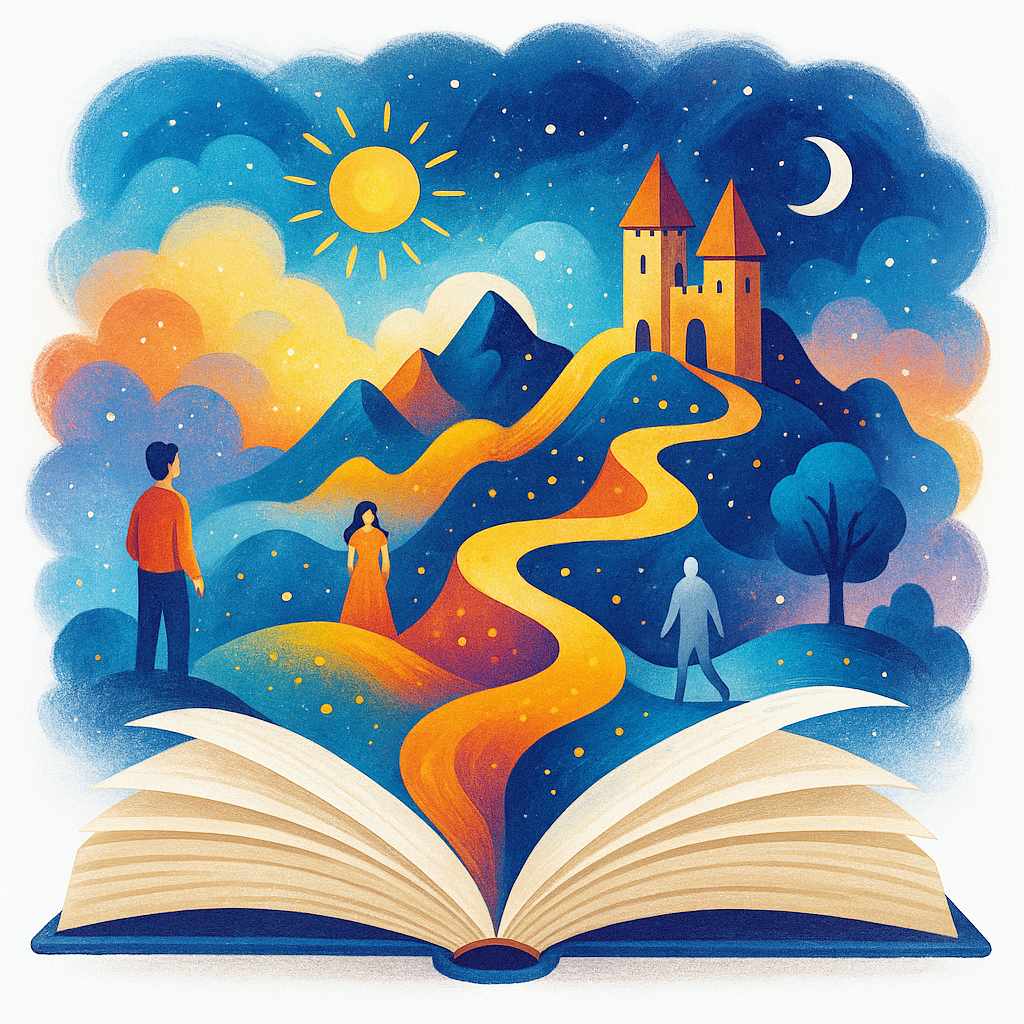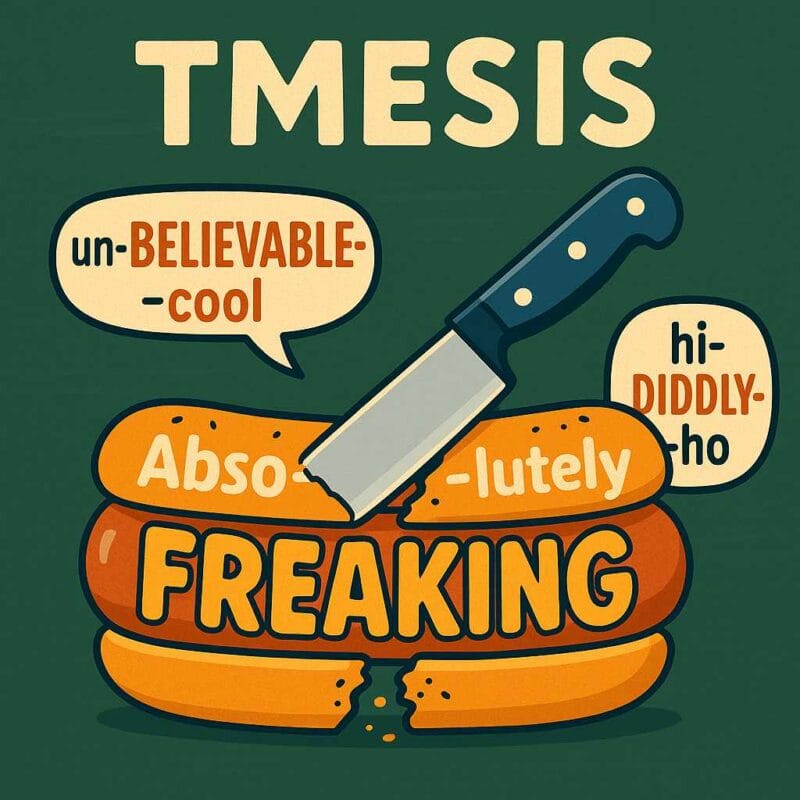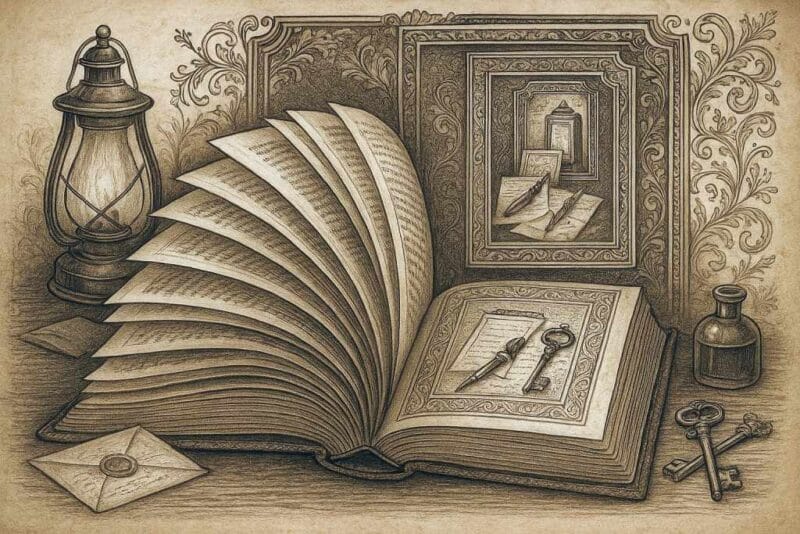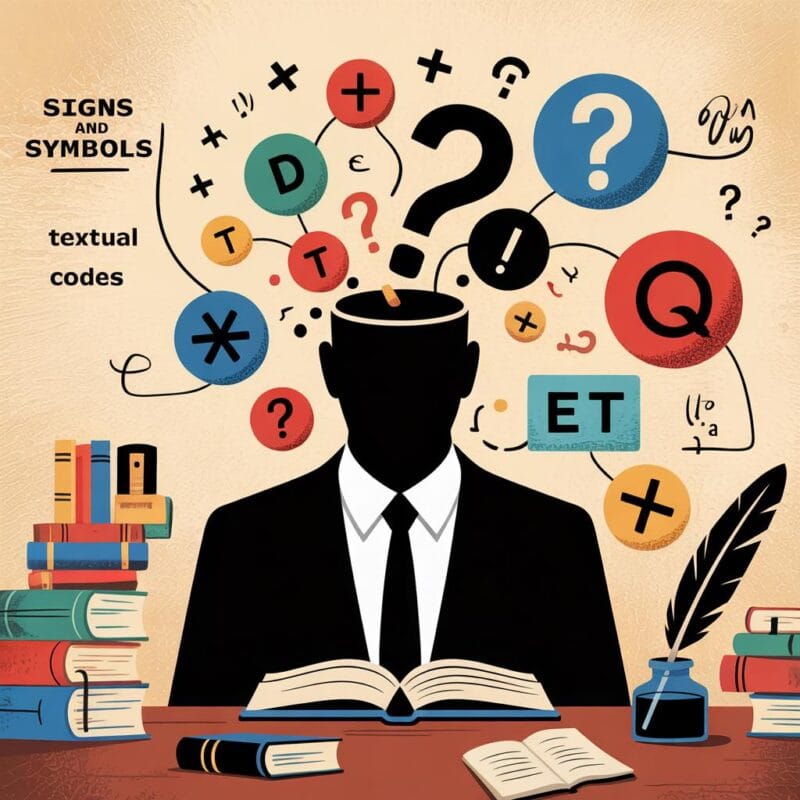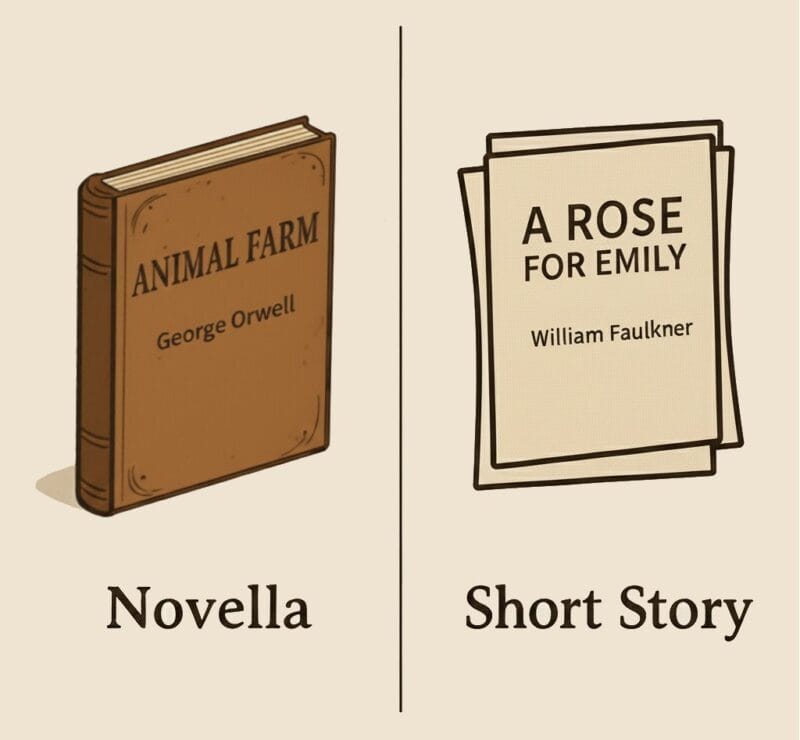Plot development is not a mechanical process of connecting events in sequence but the shaping of narrative consequence. It shows how one action implicates the next and how tension coils, slackens, and resolves.
While characters might drive a story forward, it is the arrangement of incidents, revelations, and decisions that gives the story its pulse. To understand plot development is to grasp the architecture of storytelling, a framework that connects isolated events into a coherent and consequential whole.
Writers often speak of “losing the plot,” and readers know when it happens. A story loses its power when its momentum falters or when its shape dissolves into confusion. Plot development prevents that by organizing causality, contrast, and escalation. It does not prescribe a formula but instead shapes how consequence unfolds and how transformation gains momentum.
Foundations of Plot
Plot development refers to how events in a narrative unfold and progress over time. It involves not just what happens, but the way those happenings are structured, revealed, and connected to one another. Effective plot development creates both movement and tension. It raises questions such as: What comes next? Why did that happen? How will this be resolved?
Every narrative includes a beginning, middle, and end, but plot development ensures that these divisions carry intention and direction. A weak plot lacks consequence; its events feel interchangeable. A strong plot, on the other hand, produces friction, choices lead to repercussions, conflicts build, and stakes rise.
This movement is often guided by a familiar logic of change: introduction, complication, climax, and resolution. But these elements are not merely placeholders. Their development and the way they are earned determine the story’s power.
Plot vs. Storyline Development
While closely linked, plot development and storyline development are not identical. Storyline development refers more broadly to the overall narrative arc, including subplots, character arcs, thematic integration, and emotional progression. Plot development focuses specifically on the structure and evolution of events.
Think of storyline development as a wide river system, with tributaries feeding into a central current. Plot development is the trajectory of that current, defining the way the narrative bends, accelerates, deepens, or divides. A storyline encompasses the broader terrain; plot provides the forward pull.
For instance, in Leo Tolstoy’s Anna Karenina (1878), the plot follows Anna’s affair with Vronsky and the consequences that unfold. But the storyline includes parallel developments such as Levin’s philosophical struggles and Kitty’s emotional maturation, both of which enrich the novel’s total structure.
Plot Structure and Forms
Traditional Plot Structure: Freytag’s Pyramid
One of the most enduring tools in understanding plot development is the plot structure diagram, often shaped like a triangle or pyramid. Freytag’s Pyramid, developed by 19th-century German novelist Gustav Freytag, breaks the plot into five stages:
- Exposition – The world is introduced. Characters, settings, and initial conflicts are presented.
- Rising Action – Complications escalate. Tensions accumulate. The central conflict takes shape.
- Climax – The narrative reaches its point of highest tension, change, or decision.
- Falling Action – The aftermath of the climax plays out. Subplots begin to resolve.
- Denouement (Resolution) – The story settles into its final shape. Consequences are made clear.
This model is not universal, but it offers a useful skeleton. Contemporary fiction often distorts or subverts these stages, but even in experimental works, echoes of this structure remain. Plot diagrams are less about rigidity and more about orientation; they primarily show how cause and effect travel across the narrative terrain.
Linear, Circular, and Fragmented Structures
Not all stories move forward in a straight line. Some loop while others spiral. Others fracture into disjointed timeframes. Each mode produces different effects.
- Linear plots move chronologically, where each event builds upon the previous. This is the most traditional and remains prevalent in most commercial fiction.
- Circular plots end where they begin. Often used in tragedies or stories concerned with inevitability, this structure produces a sense of fatalism or thematic recursion. Albert Camus’ The Stranger (1942) and Ian McEwan’s Atonement (2001) suggest this shape through reflection and return.
- Fragmented plots disrupt chronological order. They rely on memory, intercut perspectives, or nonlinear timelines. This technique appears in works like William Faulkner’s The Sound and the Fury (1929) or Jennifer Egan’s A Visit from the Goon Squad (2010), where causality must be reconstructed by the reader.
The choice of structure is itself part of plot development. It determines what is revealed, when, and with what impact.
Variations of the Plot Structure Diagram
The plot structure diagram remains a fundamental tool for conceptualizing how a story’s parts work together. While Freytag’s model is one example, variations exist—three-act structure, seven-point structure, hero’s journey. They all serve the same purpose: to visualize progression, conflict escalation, and resolution. Writers use these models not as rules but as conceptual maps to help them locate where the story intensifies or turns.
Mechanics of Movement
Conflict as the Driver of Development
No plot moves without conflict. Whether internal or external, visible or unspoken, conflict is the engine of transformation. It initiates movement, introduces stakes, and destabilizes equilibrium.
There are various types of conflict, often categorized as:
- Character vs. Character
- Character vs. Self
- Character vs. Society
- Character vs. Nature
- Character vs. Fate or the Unknown
These conflicts are rarely isolated. A well-developed plot often features overlapping tensions. In Nella Larsen’s Passing (1929), the social dangers of racial identity intersect with personal jealousy and emotional ambiguity. The story’s movement emerges from these entangled pressures, where external risk and inner conflict unravel together.
Conflict in plot development is not reducible to a fight or an obstacle. It is any sustained tension that requires resolution and produces change.
Causality and Consequence
What differentiates a plot from a mere sequence of events is causality. One incident leads to another because it must. The events are not just juxtaposed; they are interdependent. If a character loses their job, it triggers not only economic loss but also personal disorientation, relational strain, or even crime. Each choice compounds.
Plot development thrives on consequence: minor decisions accrue weight, misunderstandings spiral, and unintended outcomes emerge. The plot is most alive when its developments are inevitable but not predictable.
This is where good writing departs from contrivance. A contrived plot feels artificial because its turns are unearned. A developed plot feels organic, even when surprising.
Turning Points and Reversals
Key points in plot development are turning points or moments where the trajectory of the story changes direction. These include revelations, discoveries, betrayals, or decisions that force a shift in the character’s path. Aristotle called them peripeteia, which is a sudden reversal.
For example, in Jean Rhys’ Wide Sargasso Sea (1966), when Antoinette is forcibly taken from her home and confined in England, the story crosses a threshold that cannot be reversed. What follows is not only inevitable but disfiguring, as the narrative shifts from possibility into collapse. The tension no longer builds but splinters.
Well-placed reversals complicate the plot without derailing it. They intensify engagement by altering expectations without violating coherence.
Plot Examples Across Genres
To see plot development at work, consider these brief plot examples from different genres:
- Mystery: In Agatha Christie’s Murder on the Orient Express (1934), the plot unfolds through clue revelation and red herrings. The rising action builds suspense, culminating in a climax that reframes the entire investigation.
- Coming-of-Age: In J.D. Salinger’s The Catcher in the Rye (1951), the plot is less about events than about encounters that reveal Holden’s disconnection. Its development is gradual and interior but no less structured.
- Fantasy: J.R.R. Tolkien’s The Lord of the Rings (1954–55) uses multiple interwoven plotlines, each advancing through trials, alliances, and moral tests. Its scale is epic, but its development is meticulous.
- Psychological Drama: In Elena Ferrante’s My Brilliant Friend (2011), the plot evolves through subtle shifts in friendship, ambition, and rivalry. The development rests not on spectacle but on accumulating emotional complexity.
These examples show how plot development adapts to genre, pacing, and purpose. There is no single method, only principles of motion, tension, and transformation.
When Plot Development Fails
Not all stories achieve effective plot development. Common problems include:
- Stasis: The story never escalates. Events occur, but nothing shifts.
- Overcomplication: Too many threads, no connective tissue. The plot becomes murky.
- Predictability: The developments follow a fixed pattern, draining suspense.
- Emotional flatness: Events change, but the stakes remain unaffected.
Plot development requires both precision and flexibility. It demands a careful calibration between what is told and what unfolds, between design and discovery.
Plot as Patterned Movement
Plot development is not a set of instructions. It is a method of shaping time and consequence. It asks: What changes? What resists change? What chain of decisions, disruptions, or desires drives the narrative forward?
The best plots carry a sense of inevitability while still allowing for surprise. They adhere to a certain logic, regardless of any deviations from it. Their movement gathers momentum from within the story itself, shaped by its characters, its tensions, and its imagined world. To develop a plot is to craft motion with consequence, where events build upon each other with intent. When it succeeds, the reader doesn’t merely observe what happens; they are drawn into the current of something that presses forward with purpose.
Further Reading
The Greatest Books of All Time on Plot by thegreatestbooks.org
Best Books on Plot Structure on Goodreads
